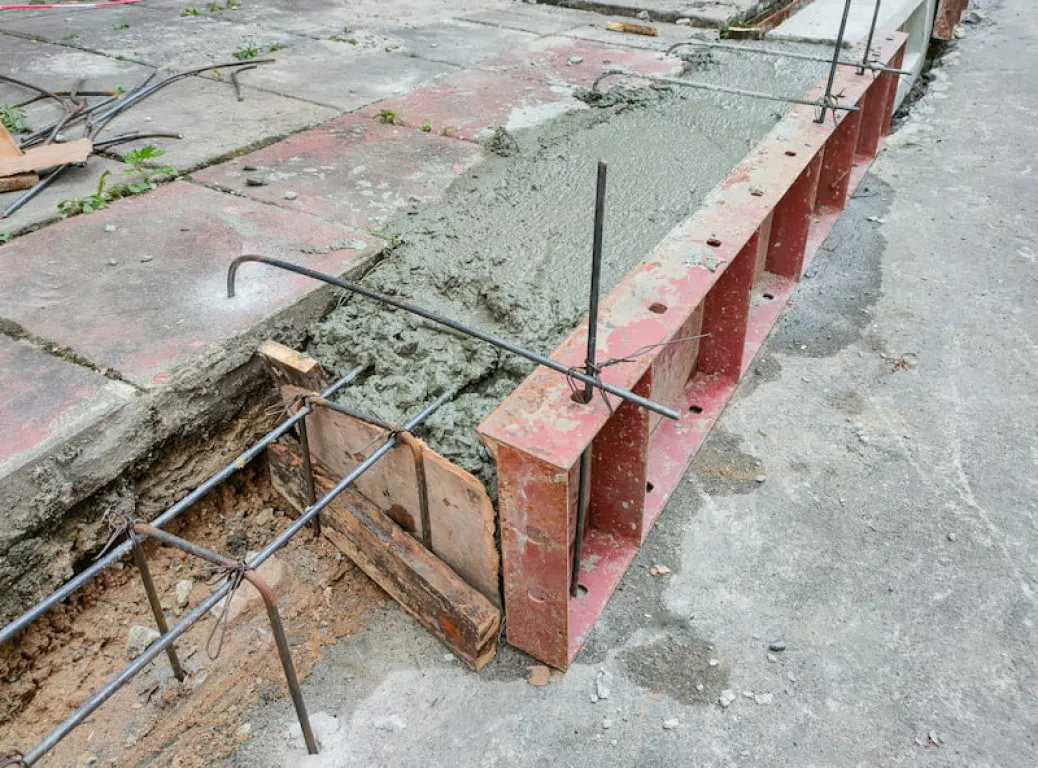In the current era of technological advancements and the complexity of architectural designs, the need for sturdy and durable construction materials steadily increases. Therefore, reinforced concrete tends to be chosen to help build damage-resistant constructions.
Let's learn more about reinforced concrete as part of the variety of concrete in construction, starting from the definition, advantages, and functions below!
What Is Reinforced Concrete?
Reinforced concrete is a composite material of concrete and reinforcing steel combined in building construction. Keep in mind that concrete has a high compressive strength but is weak against tensile forces.
While reinforcing steel has high tensile strength, it is weak against compressive forces. By combining reinforcing steel and concrete, various structures, such as buildings, bridges, and dams, can benefit from impressive strength and durability.
Reinforcing Steel in Reinforced Concrete
Reinforcing bars are steel rods embedded in concrete structures to strengthen and improve performance. This is because concrete is strong against pressure but weak with tensile forces.
In other words, the reinforcement helps resist the tensile and flexural forces acting on the concrete structure.
In general, reinforced steel has two forms that are often used in reinforced concrete construction, including:
1. Plain Iron
Plain iron is a reinforcing steel with a round cross-section and a smooth surface, making it a type of steel without transverse fins, and is usually used for soft steel.
2. Threaded Iron
Threaded iron has a transverse fin-shaped surface shape. It tends to be capable of resisting tensile forces efficiently. Some commonly used sizes are D13, D16, D19, D25, and D321.
When choosing the type of reinforced steel for a particular project, there are several factors that you need to consider, namely:
- Consider the maximum load that the structure will support. The reinforcing steel must be able to withstand these loads.
- Select reinforced steel with the appropriate strength and durability for the type of project and environmental conditions.
- Make sure the steel used is by the approved design and calculations.
Read also: 5 Earthquake Proof Building Material for Construction
Advantages of Reinforced Concrete
As the most commonly used material in building construction, reinforced concrete has several advantages. Its strength and durability fit for sturdy structure constructions. Here are some of its advantages:
1. Maximum Concrete Strength
One of the advantages of reinforced concrete is that it has maximum strength due to its original characteristics, bearing a heavy load and pressure. With the addition of reinforced steel, the strength of the concrete will be more optimal.
In this case, reinforcing steel becomes structural reinforcement to provide strength and withstand pressure on the concrete. Therefore, this material can withstand loads and ensure utmost safety in buildings.
2. Design Flexibility
This material provides flexibility in designing building structures of various sizes and shapes. Reinforced steel can be placed anywhere in a specific pattern for building structures that require extra strength, such as slabs, columns, and beams. Thus, reinforced concrete allows architects to explore various aesthetics and unique structures.
3. Weather Resistance
Weather resistance is another advantage reinforced concrete offers. High-quality reinforced concrete can withstand extreme temperature changes, UV exposure, and humidity. Not only that, the chosen building material is also resistant to corrosion and chemical attack.
Read also: Tips for Choosing Building Material for Minimalist House
Disadvantages of Reinforced Concrete
Despite its advantages, this material also has some disadvantages, including:
- Despite its advantages, this material also has some disadvantages, including:
- Requires molds and scaffolding during the mixing.
- Requires formwork to hold the concrete until it hardens.
- Low strength per unit volume with a size that may become relatively large.
- The mixing, pouring, and curing of reinforced concrete cannot be handled as meticulously as steel and plywood production.
- The strength and properties of concrete can vary depending on the composition and mixing method.
- It has a low strength per unit weight, resulting in heavier concrete with reinforcement.
Types of Reinforced Concrete Structures
Reinforced concrete consists of structural elements, which are columns, beams, and plates. The following is an explanation of these types of structures:
1. Columns
Columns in reinforced concrete generally have rectangular, round, and square shapes. Reinforcement placement in concrete columns can be done symmetrically or around each side. Meanwhile, at the bottom of the column, the installation is done by bending it inward first and making cuttings with a length of about 40 times the diameter of the reinforcement.
2. Beams
Reinforced concrete beams can resist tensile stress and pressure due to the bending load on the beam. Such a case may render the concrete unable to withstand tensile stresses. Hence, the added reinforcing steel helps increase tensile stress performance.
3. Plates
Plates are flat structures commonly used as materials for floors and roofs. This structure has a horizontal surface and is made of various materials, such as concrete, wood, steel, or a combination of all of them. Plates can distribute the load evenly over the entire surface, ensuring the structure supports heavy load.
Tips for Choosing High-Quality Reinforced Concrete
Choosing a good quality of reinforced concrete can ensure the strength and durability of the building structure. Here are some tips that can help you in choosing quality reinforced concrete:
1. Choose a Trusted Manufacturer
When planning to use this material, make sure to buy it from a reputable manufacturer that has proven its quality. Therefore, find out the certifications and quality standards owned by the manufacturer. Then, check if the manufacturer has a testing laboratory to ensure the quality of its products.
2. Check the Grade of Concrete
Reinforced concrete is classified based on its grade, indicated by numbers and letters. Therefore, choose the grade that suits your construction needs. If you still have no idea what to choose, consult the professional.
3. Pay Attention to the Type of Reinforcement
Concrete rebar is available in various types and diameters. Therefore, determine the type that suits the structural design and ensure its material is free from rust and other defects.
That's some information about reinforced concrete that you need to know. Note that making concrete for building construction requires high-quality cement. Therefore, choose quality cement tested by the Indonesian quality standard SNI: 7064: 2014, Semen Merah Putih.
Semen Merah Putih is a high-quality product for your construction needs. If you have further questions about our products, you can contact us. Let's build a stronger construction with Semen Merah Putih now!
Read also: 3 Ideas to Enhance the Look of Concrete Construction



